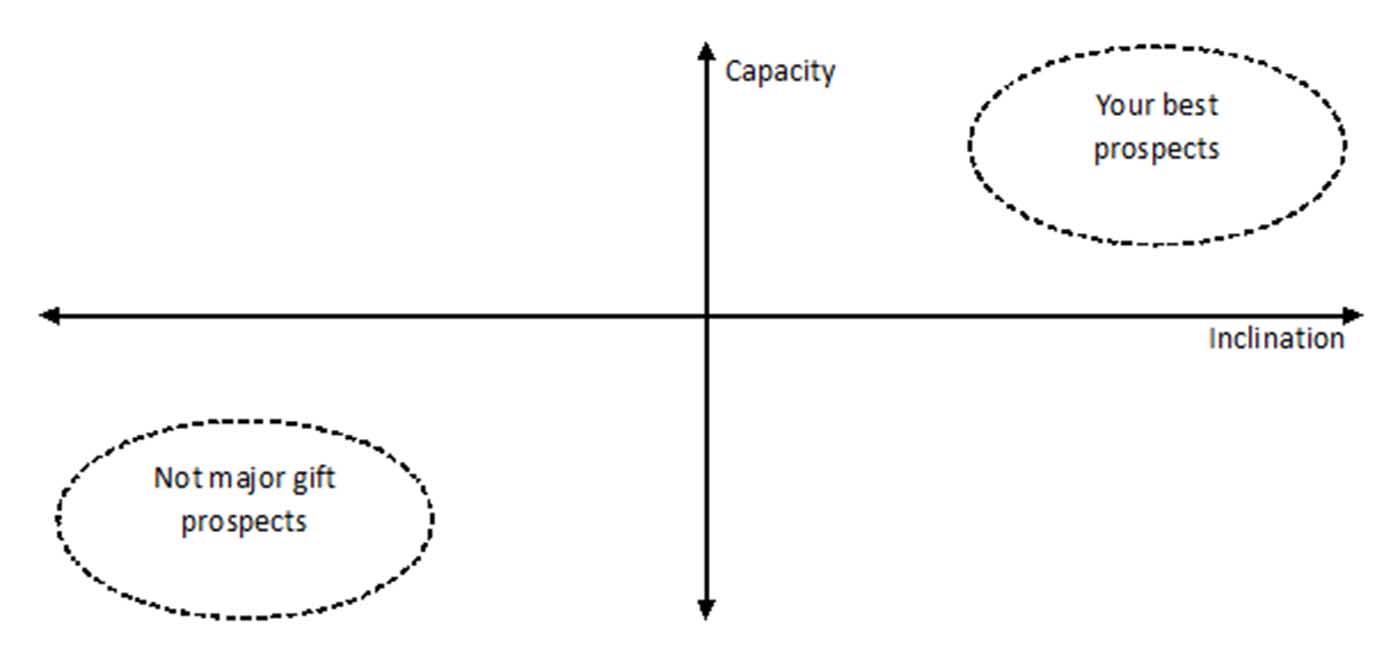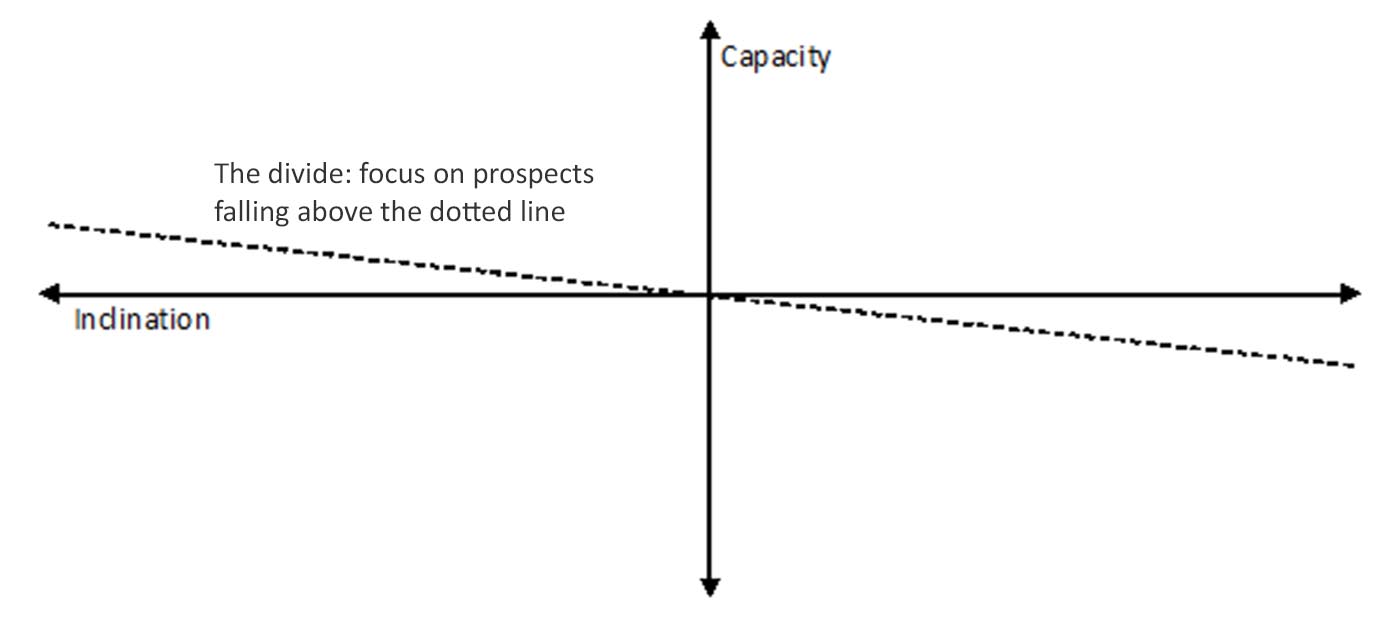
“Luck is what happens when preparation meets opportunity.” -Seneca
Pro athletes have worn this quote a little thin recently, but it’s still one that motivates me as a fundraiser.
We talk a lot about preparation here at Fearless Fundraising. Preparing for small talk, preparing for prospect outreach. It’s very much part of the Fearless formula.
Why? Because nothing gives you confidence like being prepared. It helps you focus too.
Think back to a time when you were well prepared and a time when you weren’t. There’s definitely a difference, right?
I’ll admit I’ve gone into visits not having done my homework. The result? Missing key information, aimless conversations, not actually qualifying the prospect, or leaving a meeting with no next step.
A qualification visit is a huge opportunity. Good preparation will make sure you’re ready to make the most of it.
So, what are we trying to do during qualification meetings?
Well, the goal is in the name: qualification. You want to know if your prospect has the capacity (i.e. they’re wealthy enough) and the inclination to consider a major gift. And if not now, would they consider it in the not-too-distant future?
I think of these two indicators (capacity and inclination) as variables on a graph:

After a qualification visit, you should know (roughly) where someone falls on the graph.
Now, don’t over-think this. If you’re wondering how to quantify capacity and inclination so you can figure out exactly where someone should fit on this graph, stop now. You’ll only get frustrated.
Simply try to figure out which quadrant your prospect is in. Here are a few guidelines:
- Capacity: Prospects above the horizontal axis have enough money to make a major gift to your organization, however you define it. Prospects below do not.
- Inclination: Prospects to the right of the vertical axis are favorable toward your organization. They likely have some giving and volunteer history with you. Prospects to the left are less attached. Those furthest to the left have no giving history and have never volunteered. They may not even care about your mission!
After gathering information at your qualification visit, use your best judgment. If your prospect falls somewhere in the upper right, keep them in your case load, or “portfolio.”
You can confidently disqualify anyone in the lower left. Sure, keep them on your organization’s mailing list. But they clearly don’t merit time and attention from a major gift officer.
Many of your faithful annual donors, best volunteers, and ambassadors will fall in the lower right. Be selective here. Keep your major gifts resources focused on those with the highest capacity.
The hardest group to figure out is the upper left. These folks have money, but little to no attachment. Now, if someone has met with you, that’s saying something. I wouldn’t put him on the extreme left of the graph. The question is can you move him to the upper right via good cultivation?
Here’s a visual representation of which parts of the graph I feel are worth focusing on:
 Known Knowns and Known Unknowns
Known Knowns and Known Unknowns
Yes, I am channeling my inner Rumsfeld for this post.
Before your meeting, you’ll already know a few things about your prospect. You probably know where he lives, have some sense for whether he’s philanthropic or not, and understand his current connection to your organization.
What other information would help you have a better sense for where to place him on the qualification graph above? Here are some ideas:
Capacity:
- Employment
- Foundation affiliation (sits on boards? has a family foundation?)
- Giving to other organizations
- Other assets/ real estate
- Size of past gifts
- Life events (divorce, kids in college)
Inclination / affinity:
- Frequency of past gifts
- Volunteerism
- Interests
- Involvement with other similar organizations
- Giving to other organizations
Determine your known unknowns in advance so you know where to focus during your meeting.
My next post will provide some specific questions you can ask to draw this information out of your prospect.
Outline the Conversation
While preparing for a visit, I outline the conversation I’d like to have. My ideal version of it. Give it a try if you don’t do this already.
Your actual conversation might be nothing like your outline, but going through the process is helpful. It makes you identify a goal and sketch out a road map. When you’re in the moment, having both will help you stay focused and steer the conversation in the right way.
Here’s an example:
- Warm, friendly chit chat
- Get feedback on our recent event
- How’s it compare to other events she’s attended?
- Hear thoughts related to broader cause/mission
- A top priority for her?
- Has she supported similar work?
- What does she really care about?
- Ongoing needs/opportunities at our organization
- Does she agree?
- Do they align with her interests?
- Let’s continue to get to know one another
- Ideas for next steps
- Willing to consider gift down the road?
From Zero to Rapport
I like to script the first few moments of my visit. Sound like too much? Well, science tells us first impressions are hugely important. Depending on who you read, you have something like 7-10 seconds to make a good first impression.
So, I like to figure out beforehand how I’m going to make my prospect feel comfortable and get some good small talk going. Since I called the meeting, I feel comfortable taking the lead here.
Small talk is essential to establishing rapport. And I can’t say enough about how important good rapport is in our line of work – people do indeed give to people. Your job gets a whole lot easier when your prospects like you.
So, how do you prepare for this? Take a look at my previous series on small talk. It’ll provide you with a good framework for starting with the immediate present and building from there.
Relating helps to. Do some social media “research” to see if you can identify any of your prospect’s hobbies or interests. Or, if any trusted insiders (volunteers, other donors, etc.) know him, ask them.
Don’t plan to lead with this info. Start small, and then steer the conversation such that it comes up.
The next post on this topic will provide some specific language suggestions.
Get Ready to Go There
Should you talk about philanthropy on the first visit? Yes! Should you ask for a gift? Maybe. This flowchart will help you decide.
Regardless, in most qualification visits there comes a point where you need to transition the conversation to philanthropy. Are you going to be able to script this transition and have it go exactly the way you want? No way.
But, doing this thought exercise in advance will help you be ready to make the transition when the time comes. I call it the “path of least resistance” technique.
Now, in this case, I’m not talking about the past of least resistance to a gift. We’re focused here on the path of least resistance to a first conversation about philanthropy. This will vary depending on the existing relationship with the prospect.
Here are some examples:
- Annual donor > Thank for current giving; update on use of funds
- Supports other organizations > Role of philanthropic support at your organization
- Volunteer > Other ways to get involved and make a difference
- Attended event > Follow-up on use of funds raised and/or impact of giving on program featured
- Referral > Highlight generosity of referrer and impact of his giving
- Completely cold > Desire for change; what it takes to achieve positive outcomes
Next Steps Inventory
Ideally, you’ll leave your qualification visit with a solid idea for a next step with your prospect. Perhaps you’ll even agree on one with her before the end of the meeting.
While preparing, jot down a quick inventory of the possible, and most likely, next steps for the prospect. What can you envision doing with them after the meeting?
A few ideas:
- Site visit and tour
- Meeting with program staff
- Meeting with President or Executive Director
- Volunteer opportunity
- Event attendance
Pretty basic stuff – you’re probably doing this already. I just find it helpful to think about it in advance. It’s good to know what you’re working toward!
A Really Useful Attitude
Nicholas Boothman uses this phrase in his book How to Make People Like You in 90 Seconds. Sound cheesy? I thought so too, at first. Basically it just means adopting an attitude that will help you get what you want.
What do you want out of a qualification visit? You want information. You want to make a connection, ideally on an emotional level. Both require you to build rapport and trust.
Simply put, some attitudes help you do this better than others.
- Useful: Warm, enthusiastic, confident, welcoming, interested, helpful
- Not useful: Sarcastic, impatient, bored, anxious, self-conscious, pessimistic
I don’t know about you, but I don’t always feel enthusiastic. I don’t always feel warm, interested, or helpful either. Sometimes I don’t want to be around other people!
This is normal. But, top performers know how to get the job done even when they’re not feeling it. They learn how to adopt a useful attitude.
Sometimes all I need to do right before a visit is remind myself to be warm, welcoming, enthusiastic, and interested. Other times I need to go further and act as if I feel those things and trust that the feelings will follow.
If it sounds like faking it, don’t worry. It is faking it. Right feelings usually follow right actions.
Who Called this Meeting?
Before visits I always remind myself that “this is my meeting.”
(Alarm bells going off among the donor-centered set.)
Here’s what I mean. Early on, I tended to cede control of meetings to my prospects. I was more comfortable following their lead, so to speak.
Remember that you called the meeting. Yes, be a good listener. Yes, focus on your prospect’s interests. But, make sure to do your job. Most prospects don’t qualify themselves.
It’s OK to set the agenda and pick the conversation topics. And it’s OK to respectfully steer things back on track if you get off course.
Wrapping Up
That’s it for qualification meeting prep!
Remember, much of the work is done before you even get to the meeting. Front-load with good preparation – it will give you confidence.
Next week, we’ll talk about the meeting itself. And I’ll offer up some sample language for you to try out.
For now, let me know if I’ve forgotten anything. Any preparation routines you’d like to share?
Thanks again for continuing to share your experience and knowledge.
I hope in your next post you will clarify what you mean by “does she agree?” in the example outline of a conversation.
Hi Michelle, happy to clarify here!
It basically means Does she think you’re pointed in the right direction? Does she agree that the needs you outline are the most important needs? Similarly, does she agree that the opportunities you want to pursue are worth pursue?
They’re common lines of questioning for “advice visits” and a good check for inclination to give. You’re getting the prospect to engage with the direction your organization is planning to take (i.e. the needs it plans to address and opportunities it plans to seize in the near future). If she agrees on both fronts its fairly natural to transition into a conversation about how she can help you meet those needs and/or take advantage of those opportunities.
Do you think it’s a good practice to ask for a qualification gift?
Hi Mira! Yes, sometimes a qualification gift is a good strategy, particularly if the individual isn’t already giving to your organization. A $1,000 annual donor is much more likely to give $50,000 to your next capital campaign than someone with no giving history. Plus the conversation changes once someone becomes a donor at any level. They’re “bought in” and you can treat them like an insider.